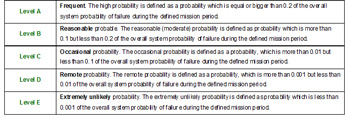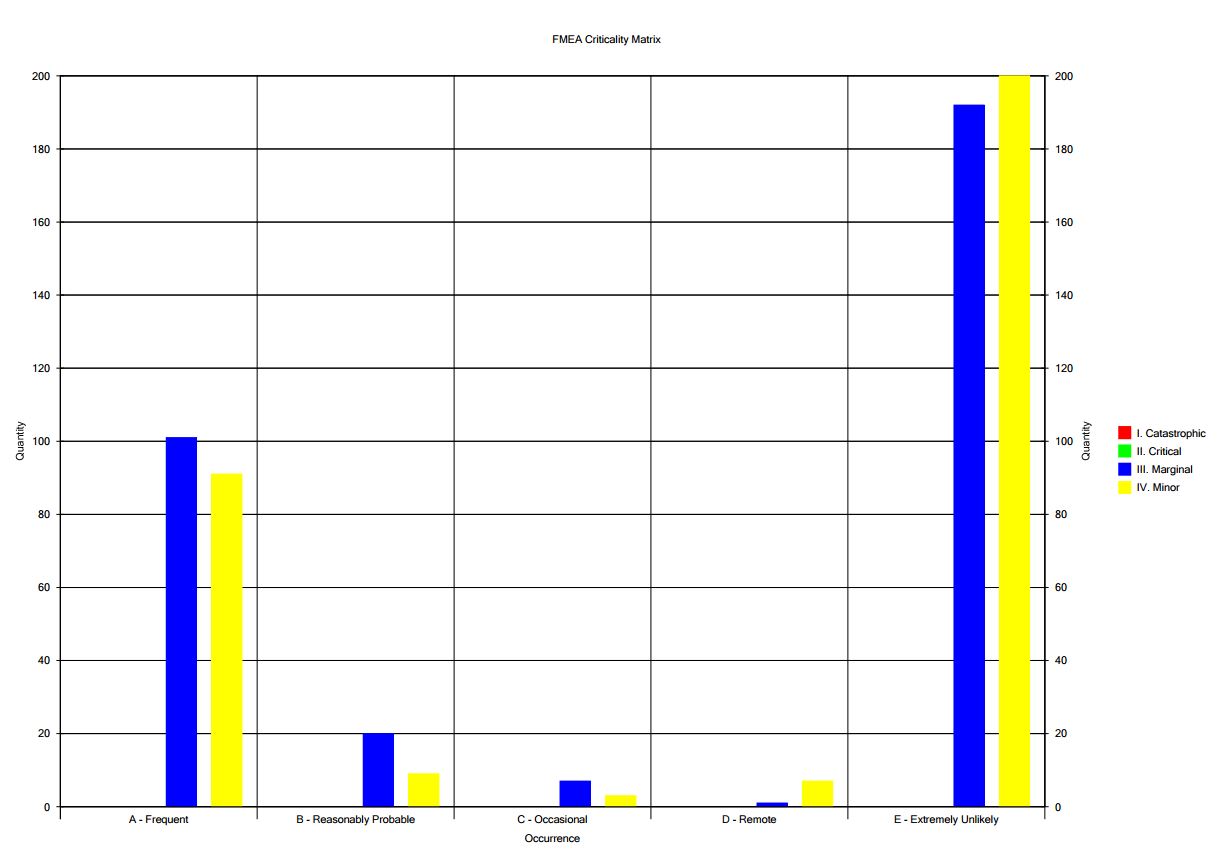
FMEA, FMECA
![]() Click here for MTBF
Click here for MTBF
Failure Analysis & Troubleshooting
A FMECA ("Failure Mode Effects Criticality Analysis") consists of an outlining of all of the possible Failure Modes of all
elements in a system, and a determination of the Effects and Criticality of these failure
modes. This analysis looks at the failure of each element within a device or system
to determine the effect on the end performance. The failure of an element may be
simple or complex. As an example, a resistor has three failure modes. The resistor
could be open, shorted, or outside of its specified tolerance. An integrated circuit
is obviously much more complex.
The goal is to eliminate any single-point failures that would cause the system to
fail to meet its performance requirements. Another way to look at this is to validate
that a “graceful” degradation of a device or system will take place over time.
As a further example, suppose that the input to a device or system is coupled to
the outside world, via a resistor. If the resistor were to open, there would be
no output from the device or system. The effect is, therefore, non-performance,
the criticality is very high, and this constitutes a single-point failure. The goal
is to minimize the likelihood of single-point failures and to provide the greatest
amount of graceful degradation.
This analysis is performed using specialized computer software, along with SPICE
and other mathematical models of the system.
The FMECA begins with a stress-based reliability (MTBF) analysis. This generates
the failure rate of each of the components. Each component in the BOM is assigned
a set of failure modes. These are normally defined using MIL-HDBK-338B which has
a definition of the common types of failures for each type of component along with
the probability (Mode Failure percentage) of each failure mode occurring. For example:
Open 30%, Short 30%, out of tolerance 40%.
Next, each failure mode is analyzed for its local, next higher assembly, and system
level effect which will occur when the failure model happens as shown below.

The failure mode is also assigned a severity classification.
Severity Type Description

The Mode criticality is then computed. Mode criticality is a numerical value that
can be assigned to each failure mode. Mode criticalities are based on the FMECA
approach defined in MIL-STD-1629 and other guides. The Mode Criticality is then computed as:
Mode Criticality = Failure Effect Probability * Mode Failure Rate * Operating Time
of the System
This is really the essence of the FMECA. The result is the ranking of the most critical
faults by the probability that they are most likely to occur -- the worst failure
mode offenders. The results are listed in a table or graphed as shown below.



In order to provide a firm fixed quotation for a FMECA, we will need to see a schematic of the design, a parts list (BOM), and a specification, if one exists.
Please let us know if a Non-Disclosure Agreement (NDA) needs to be put into place. If so, please forward a Mutual NDA Form in MS Word Format to lee@aeng.com. AEi Systems can also send its mutual form to you if that is preferred.

Download the AEi Product Brochure
FMEA Mode Criticality Matrix
The difference between the FMEA and the FMECA is the criticality portion of the analysis -- the assessment of the probability along with the severity. In fact, the criticality represents the culmination of the analysis and much of the usefulness in the analysis stems from this aspect.
• Assesses what happens to the system when components do fail
• Ranks parts by failure rate and how bad a failure would be
• MIL-STD-1629A/ECSS-Q-ST-30-02C Guidance
• BOMS Configured with Failure Modes for each part
• MIL-HDBK-338B Failure mode Probabilities
• Open, short, Change in Value
• Local, Next, and End Effects Compiled
• Severity Assigned
• FMECA Info Read into Relex
• Stress, Temperature, and Failure Rates applied
• Criticality and Risk Levels Computed
In order to provide a firm fixed quotation for a FMECA, we will need to see a schematic of the design, a parts list (BOM), and a specification, if one exists.








